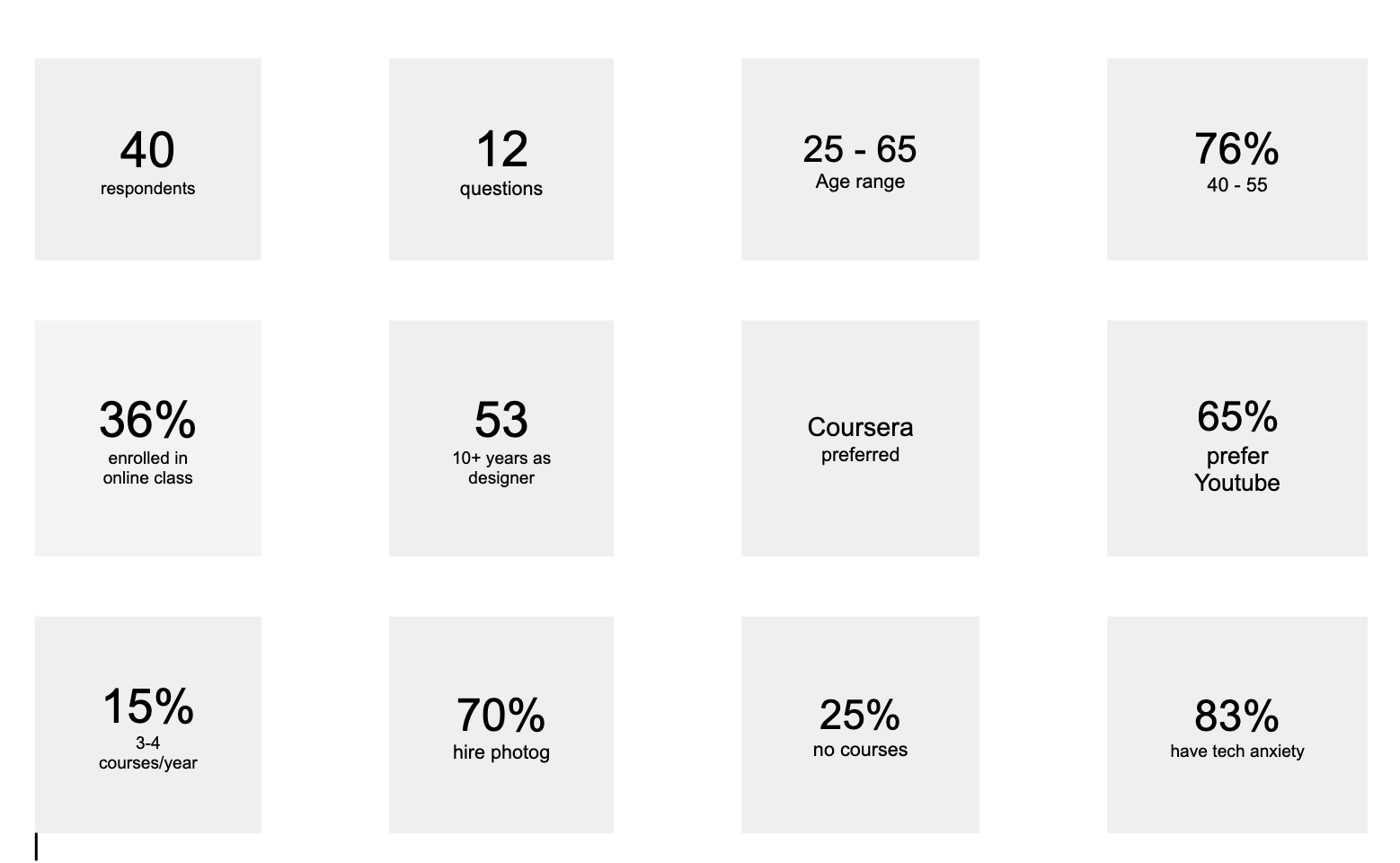Content Monetization
An interior designer had a side business helping other designers use their iPhones to take better photos of their work. She needed to turn her idea into a product. Designed and built an online class in a modular format, and a learning experience that can be deployed via multiple channels.
Artifacts
Discovery
Held an initial kick-off meeting with domain expert, product manager, developer and UX research to define project stages, expectations, and create a product roadmap. The product definition phase set the foundation for the final product. Led brainstorming and ideation process around the product at the highest level.
Established project scope, roadmap, team structure (who will design and develop the product), communication channels, expectations (KPIs)
Ideation Sessions
Led ideation and brainstorming sessions to discover the right solution to fit her needs. Once we defined the need, I recommended that she turn her knowledge and content into an online course provided context with competitive/market research data:
Problem Statement
Online courses have an extremely low completion rate which means acquisition costs would be astronomical, which was untenable for this solopreneur. We needed to do better than the industry standard of 5% and build a learning experience with at least 76% completion rate.
Solution
Discovered through market research that high-touch personalized courses with a quantifiable monetary benefit are the most successful. Also, certification programs that signal mastery/credibility. Finally and most relevant to this project, when there’s a deeper pay-off—such as cutting project costs, managing client expectations, building lead magnets, monetizing their work.
Hypothesis
If we build an experience that highlighted the deeper pay off throughout the user flow, we could optimize completion and use motivation breadcrumbs to create end-to-end momentum.
User Research
Designed a research study to help us identify the pain-points within her audience and uncover growth opportunities. Created Customer Data prioritization scale to improve customer journey intelligence
Individual in-depth interviews (IDI)
Social Listening (Example here)
Data Analysis
Keyword Analysis
Market Data
Competitive Research
Personas
Language & Emotion
Helped define the specific language through empathy mapping and answering the following—
see – what will the audience see (and where are they seeing it)?
hear – what are they hearing and who from? Which channel?
feel – how they are feeling
do – what will our audience be doing? What decisions do they feel they have to make?
Content Audit
With the user journey and language defined, I conducted an in-depth content audit across the website, social media channels, and decks/presentations used previously to deliver the learning program. I created a spreadsheet in Excel with specific content categories, created composable content structure with cards, then mapped the cards to specific stages along the user journey. This framework became the outline for the course structure, which could be scaled up and scaled down depending on the channel used.
Content recommendations
Focused on translating complex terms and instructions into clearer and more concise content. We implemented a composable user experience aligned with specific personas which enabled UX to design a continuous and fluid CX to create a consistent experience.
Beta Test
Ran a beta test experiment via Facebook private group with 5 students.
Impact
Lowered interaction costs by making onboarding steps easy through traditional usability guidelines
Conducted frequent critical reviews, content audits and regular quality checks through AI analysis tools to ensure implementation of best practices and quickly resolve issues in code
Helped satisficers extract the meaning from text as quickly as possible with succinct summaries
Reached an 80% completion rate with personalization, deep audience insights, and high-touch interactions.







